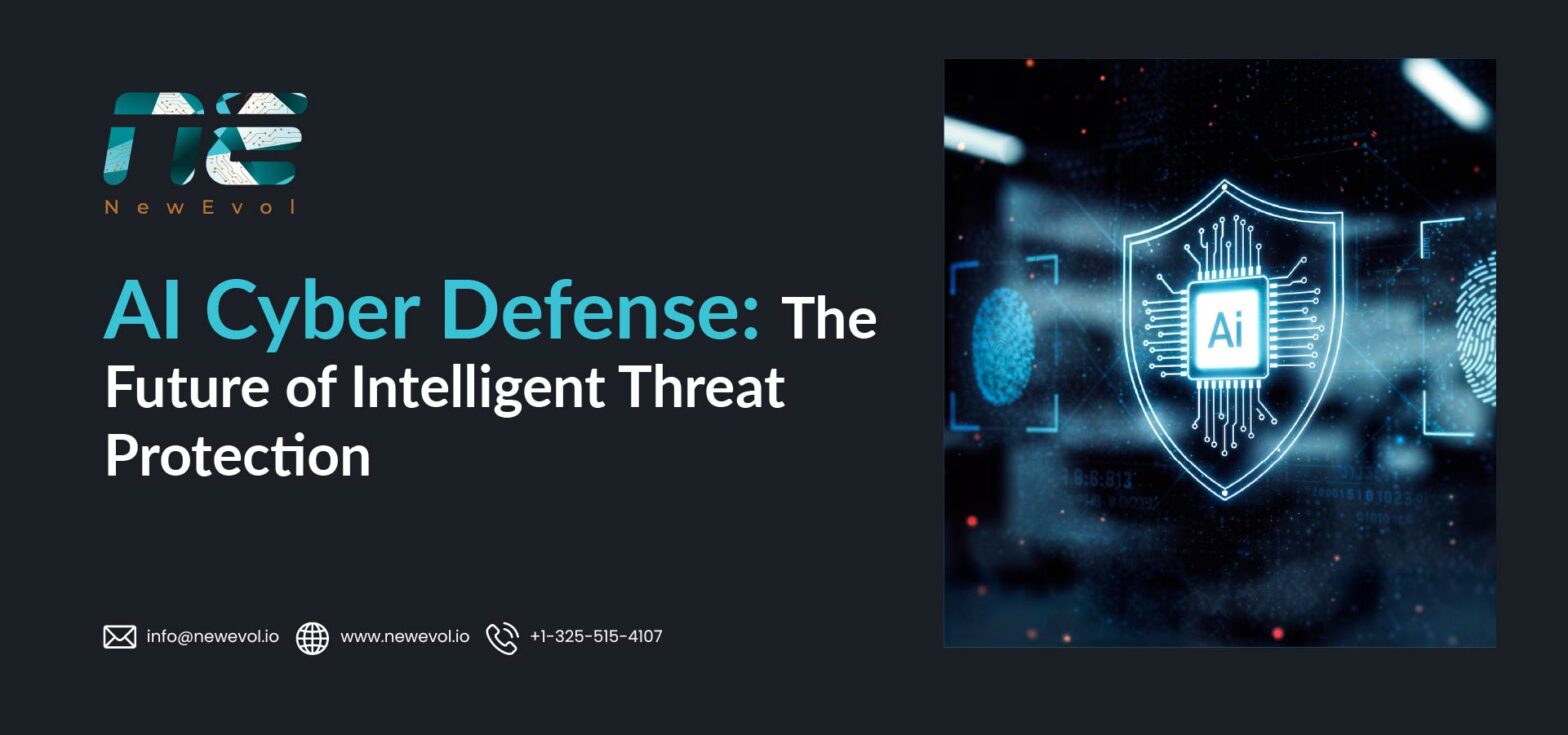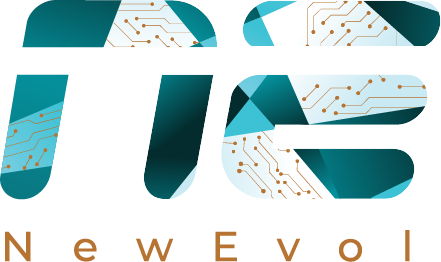AI Cyber Defense: The Future of Intelligent Threat Protection

The UAE is rapidly advancing as a global hub for finance, trade, and innovation—but this progress also makes it a prime target for cybercriminals. Traditional security methods are no longer enough to keep pace with sophisticated, fast-moving threats. That’s where Artificial Intelligence (AI) steps in. AI-driven cyber defense systems can analyze massive amounts of data in real time, detect unusual behavior, and adapt to evolving attack techniques far faster than human teams alone. 96% of UAE organizations deploy AI for threat intelligence, and 93% use AI for threat detection and response, according to Cisco’s 2025 Cybersecurity Readiness Index.
For businesses in the UAE, especially those operating in regulated sectors like banking, energy, and government, AI isn’t just an upgrade—it’s becoming a necessity for intelligent threat protection.
AI-Powered Threats Emerging in the UAE
While AI is transforming defense, cybercriminals are also exploiting it to launch more advanced attacks. In the UAE, where digital transformation is accelerating across banking, energy, and government services, AI-powered threats are becoming a pressing concern.
- Automated Phishing Attacks: AI can generate convincing phishing emails in Arabic and English, making it harder for employees to spot red flags.
- Deepfake Social Engineering: Attackers use AI-generated voices and videos to impersonate executives, tricking organizations into transferring funds or disclosing sensitive data.
- AI-Driven Malware: Malicious code can now learn from its environment, bypass traditional defenses, and adapt tactics in real time.
- Adversarial Attacks on AI Models: Hackers target AI-powered defenses themselves, feeding them manipulated data to misclassify threats and create blind spots.
Core Capabilities of AI Cyber Defense
AI-driven cybersecurity is not just about faster detection—it’s about smarter, adaptive defense. For organizations in the UAE, where critical infrastructure, banking, and government services face constant cyber pressure, the following AI capabilities are game changers:
Real-Time Threat Detection
AI analyzes massive volumes of logs and network traffic in seconds, spotting anomalies that human analysts might miss. This enables faster identification of attacks before they spread.
Predictive Intelligence
Instead of waiting for an incident, AI models learn from global and regional threat data to predict potential attack patterns. This helps UAE enterprises stay one step ahead of adversaries.
Automated Response
AI can contain threats instantly—isolating compromised systems, blocking malicious IPs, or rolling back ransomware activity—reducing reliance on manual intervention.
Adaptive Learning
Unlike static rules, AI continuously evolves based on new data. This is critical in the UAE, where attackers are constantly testing new tactics against high-value targets.
Enhanced Incident Investigation
AI-powered analytics provide detailed insights into the “who, what, and how” of an incident, enabling faster root-cause analysis and preventing repeat attacks.
Current State of AI Adoption in UAE Security
The UAE is rapidly embracing AI in its cybersecurity strategy, but adoption comes with both progress and challenges. Here’s where things stand:
Key Adoption Stats:
- Threat Intelligence Deployment: Around 96% of UAE organizations now use AI for threat intelligence. middleeastainews.com+2Zawya+2
- AI in Detection & Response: Roughly 91%–93% incorporate AI technologies in security detection, response, or recovery functions. Zawya+2Zawya+2
- Planned Increases in AI Investment: ~95% of organizations intend to increase AI investments in cybersecurity to address current and future threats. The National+2TECHx Media+2
- Maturity Gap: Only about 30% of organizations are at a “mature” or “progressive” level of readiness where AI is integrated deeply and securely. Zawya+1
Strengths:
- Widespread Awareness & Deployment: UAE organizations are among the global leaders in adopting AI tools for cybersecurity, particularly in threat detection and intelligence.
- Strategic Budgeting & Planning: Many firms are making long-term plans for upgrading infrastructure and filling gaps with AI driven tools.
Gaps & Challenges:
- Skills Shortage: There is a significant shortage of skilled cybersecurity professionals who can design, operate, and maintain AI-powered defenses.
- Understanding AI Threats: While adoption is high, confidence in handling AI-born risks is weaker. For example, many organizations aren’t fully sure their teams understand how attackers might use AI.
- Exposure of Vulnerabilities: There are thousands of assets in the UAE exposed to cyberattack, many with long-standing vulnerabilities. AI-driven attack tools could exploit these. Gulf News
What This Means for UAE Organizations:
UAE companies are ahead of many globally in adopting AI cybersecurity tools, yet their real preparedness is still catching up. Technology is there, but gaps in talent, threat understanding, and infrastructure maturity mean many are under-leveraging AI’s full potential. This creates opportunities: organizations that can build stronger AI defense models, train specialists, and shore up vulnerable systems stand to gain a major strategic advantage.
Legal, Ethical & Compliance Considerations
Adopting AI in cybersecurity isn’t just about deploying smarter tools—it also brings legal, ethical, and compliance responsibilities that UAE organisations must navigate.
1. Data Privacy & Protection Laws
The UAE has strengthened its data protection frameworks with the UAE Federal Personal Data Protection Law (PDPL) and emirate-specific regulations like DIFC Data Protection Law. AI systems that collect, analyse, or automate decisions based on sensitive data—especially in critical sectors like healthcare and finance—must comply with these laws to avoid legal and reputational risks.
2. Ethical Use of AI
AI-driven cybersecurity solutions must be designed and used responsibly. Over-reliance on algorithms without human oversight can lead to ethical challenges, such as unfair profiling, bias in threat detection, or lack of transparency in automated decision-making. Ensuring explainability and accountability in AI operations is critical.
3. Sector-Specific Regulations
Critical infrastructure operators, banks, telecom providers, and healthcare organisations are regulated under NESA, UAE Central Bank, TRA, and healthcare compliance mandates. AI solutions must be tailored to meet these sector-specific security and compliance requirements.
4. Global Standards Alignment
UAE enterprises integrating AI into security are also encouraged to align with global standards such as ISO/IEC 27001, NIST Cybersecurity Framework, and EU GDPR (for international data handling). This ensures cross-border trust, especially for organisations handling international clients and data flows.
5. Accountability & Liability
With AI, accountability can blur—who is responsible if an AI system makes an error that leads to a breach? UAE regulators and enterprises are still developing frameworks to clarify liability, but organisations must proactively define internal policies to handle such scenarios.
Best Practices for Implementing AI Cyber Defense
For UAE enterprises, AI in cybersecurity is not just about adopting new technology—it’s about integrating it thoughtfully to maximize value and minimize risk. Here are best practices to guide implementation:
1. Start with Clear Use Cases
Identify where AI adds the most value—such as anomaly detection, phishing prevention, or automating threat response. Prioritize areas with high ROI and measurable impact.
2. Combine AI with Human Expertise
AI excels at speed and scale, but it cannot replace human judgment. Security analysts should validate AI-driven alerts and refine models to ensure accuracy.
3. Ensure Compliance from Day One
Align AI adoption with UAE’s PDPL, NESA, and sector-specific mandates (e.g., Central Bank, TRA, healthcare regulations). Building compliance into deployment avoids costly rework and penalties.
4. Invest in Data Quality & Governance
AI systems are only as good as the data they’re trained on. Enterprises should establish strong data governance practices, ensuring clean, contextual, and region-relevant threat intelligence feeds.
5. Build Explainability & Transparency
Choose AI solutions that provide explainable insights, not just black-box alerts. This improves trust, accountability, and regulatory acceptance.
6. Strengthen Integration with Existing SOC Tools
AI defense works best when connected to SIEM, SOAR, EDR, and TIP platforms, enabling faster detection and automated responses across the security stack.
7. Focus on Continuous Learning & Tuning
Threats evolve constantly. Regularly retrain AI models with fresh data, lessons from incidents, and sector-specific intelligence relevant to the UAE.
8. Partner with Trusted Experts
For enterprises facing talent gaps, collaborating with managed security service providers (MSSPs) or AI-focused security vendors ensures skilled deployment, monitoring, and fine-tuning.
Challenges & Risks to Watch For
While AI offers powerful capabilities, UAE enterprises must also prepare for the challenges and risks that come with adoption:
1. False Positives and Alert Fatigue
AI systems can generate a high number of false positives if not tuned properly. Without human oversight, this can overwhelm SOC teams instead of helping them.
2. Data Privacy Concerns
Since AI relies on large volumes of data, improper handling can lead to violations of UAE’s PDPL and sector-specific rules. Sensitive data must be processed within national borders.
3. Talent Shortages
AI security requires skilled analysts and data scientists. Many UAE enterprises face a shortage of such expertise, making it difficult to fully leverage AI solutions.
4. Adversarial AI Attacks
Cybercriminals are also using AI—for example, generating deepfakes, automating phishing campaigns, or manipulating AI models through poisoned data. Defense systems must be prepared for AI-driven threats.
5. Integration Complexity
AI tools must fit into existing SOC workflows with SIEM, SOAR, and EDR systems. Poor integration leads to silos, limited visibility, and slower response times.
6. High Costs of Deployment
Advanced AI solutions demand significant investment in infrastructure, licensing, and ongoing maintenance. Without a clear ROI, adoption can strain budgets.
7. Over-Reliance on Technology
AI should augment—not replace—human decision-making. Relying solely on automated defenses increases the risk of missing sophisticated, targeted attacks.
8. Regulatory & Ethical Scrutiny
AI decisions need to be explainable and transparent. Black-box systems may face resistance from regulators, especially in critical industries like finance, healthcare, and energy.
How Organizations in UAE Can Move Forward
For UAE enterprises, adopting AI in cyber defense should be a strategic journey, not a rushed deployment. Here’s how organizations can move forward:
1. Start with Clear Objectives
Define what AI should achieve—faster threat detection, automated response, improved compliance reporting, or reducing SOC workloads. Clear goals prevent wasted investments.
2. Invest in Hybrid Models
Combine AI-driven automation with human intelligence. UAE SOC teams should use AI to handle repetitive tasks while analysts focus on complex, context-rich threats.
3. Strengthen Compliance Readiness
Ensure AI solutions align with UAE PDPL, NESA standards, and industry-specific mandates. Select vendors who offer localized compliance support.
4. Build Regional Context into AI Models
Feed AI platforms with regional threat intelligence—including local phishing trends, geopolitical risks, and sector-specific attacks—to improve accuracy and relevance.
5. Upskill Cybersecurity Teams
Offer training for SOC analysts, IT staff, and compliance officers to work effectively with AI-driven tools. Partnering with UAE universities and training institutes can help close the talent gap.
6. Adopt a Phased Rollout
Pilot AI deployments in critical systems (e.g., finance, healthcare) before scaling across the enterprise. This ensures lessons are learned before full implementation.
7. Collaborate with Trusted Partners
Work with managed security providers and AI security vendors who understand the UAE regulatory and threat landscape, reducing risks during implementation.
How NewEvol Helps UAE Entities
Adopting AI-driven cyber defense can be complex, but NewEvol makes the process seamless for enterprises in the UAE. Here’s how we add value:
1. AI-Powered Threat Detection & Hunting
Our platform analyzes massive volumes of logs and telemetry in real time, identifying anomalies, zero-day attacks, and AI-generated threats faster than traditional tools.
2. Regionalized Threat Intelligence
NewEvol integrates Middle East–specific threat feeds, giving SOC teams actionable intelligence that reflects local attack patterns, industry risks, and geopolitical factors.
3. Compliance-Ready Architecture
We design AI solutions aligned with UAE PDPL, NESA, and sector-specific regulations, ensuring data sovereignty and audit readiness.
4. Seamless SOC Integration
Our AI platform integrates smoothly with SIEM, SOAR, EDR, and Security Data Lakes, avoiding silos and enabling unified defense operations.
5. Cost-Efficient Scalability
We optimize infrastructure for large-scale data analysis without overspending—making enterprise-grade AI security accessible to UAE organizations.
6. Managed AI Security Services
For entities facing talent shortages, NewEvol provides SOC-as-a-Service and AI-enabled managed detection & response (MDR), helping teams strengthen defenses without overwhelming internal staff.
Conclusion
AI cyber defense is no longer a futuristic concept—it’s a present-day necessity for UAE enterprises. With rising cyber attacks, strict compliance mandates, and increasing digital reliance, organizations must adopt intelligent, adaptive defenses. AI empowers security teams to detect threats faster, respond smarter, and stay ahead of adversaries who are also using advanced technologies.
For businesses in the UAE, the way forward is clear: combine AI-driven automation with human expertise and regional intelligence to build resilient security operations. With trusted partners like NewEvol, enterprises can move from reactive defense to proactive, intelligent threat protection.
FAQs
1. Does the UAE cybersecurity strategy focus on AI?
Yes. The UAE’s cybersecurity strategy highlights AI and automation as key tools to strengthen national defenses and protect critical sectors.
2. What is the UAE artificial intelligence strategy?
The UAE AI Strategy 2031 aims to position the country as a global leader in AI adoption across industries, including cybersecurity, healthcare, and finance.
3. What is the cybersecurity strategy of UAE?
The UAE Cybersecurity Strategy focuses on resilience, data protection, regulatory compliance, and innovation—encouraging AI adoption to counter advanced threats.
4. What is the future of AI in cybersecurity?
AI will play a central role in detecting, preventing, and responding to cyber attacks in real time, helping UAE organizations stay ahead of evolving threats.

